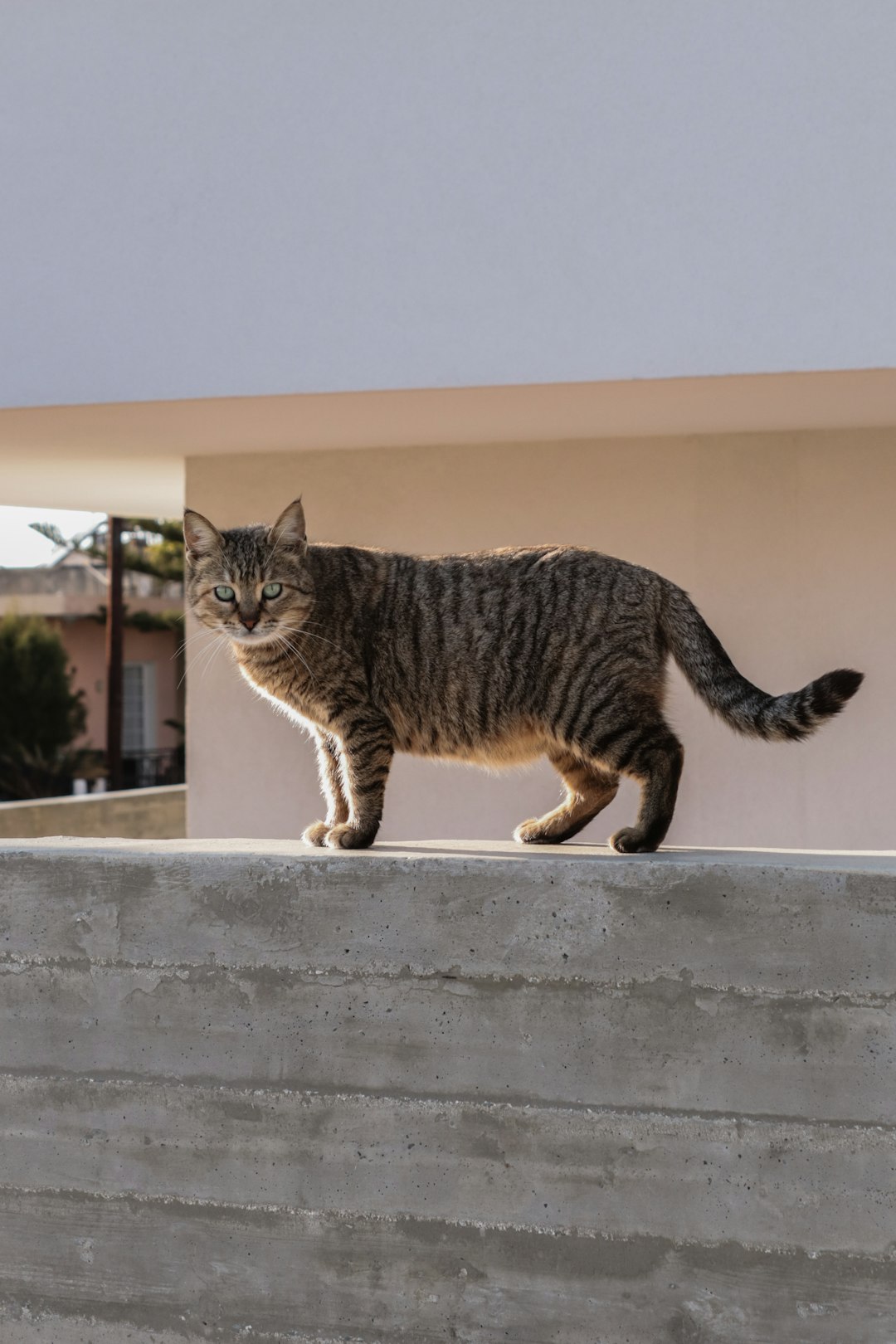Cat walking can be a rewarding experience for both you and your feline friend when approached correctly. Understanding your cat’s behavior is crucial, as it lays the foundation for a successful outing. With the right equipment and training, you can ensure your cat feels comfortable on a leash. Furthermore, choosing safe locations and setting an appropriate pace will enhance the experience. By following these tips and tricks, you’ll transform your casual strolls into enjoyable adventures that keep your cat engaged and happy. Get ready to embark on a journey filled with exploration and bonding through cat walking!
Understanding Your Cat’s Behavior Before Walking
Before embarking on the adventure of cat walking, it is essential to comprehend your feline friend’s behavior. Each cat has a unique personality that influences how they will respond to leash walking. Here are key points to consider:
- Assess Temperament: Some cats are naturally curious, while others are shy or skittish. Observe how your cat reacts to new environments.
- Socialization Level: Cats that have been exposed to a variety of experiences tend to adapt better to walks. Consider their exposure to different sounds and sights.
- Energy Levels: Recognize if your cat is high-energy or more relaxed. A more active cat may thrive on walks, while an easily tired cat might require a gentle pace.
To gauge their readiness for cat walking, consider these questions:
| Behavior Aspect | Ready for Walks | Needs More Time |
|---|---|---|
| Curious about the outdoors | ✔️ | ❌ |
| Enjoys new experiences | ✔️ | ❌ |
| Responds well to leash training | ✔️ | ❌ |
By thoroughly understanding your cat’s behavior, you can ensure a pleasant and safe experience during your cat walking escapade.

Choosing the Right Equipment for Cat Walking
Selecting the appropriate equipment for cat walking is crucial to ensure both safety and comfort. Here are some essential items to consider:
Harness:
- Opt for a harness that fits snugly but allows for comfortable movement.
- Types of harnesses:
- H-backs: Ideal for escape-prone cats.
- Vest-style: Provides more support for heavier cats.
Leash:
- Choose a lightweight leash around 4-6 feet long to give your cat some freedom while still maintaining control.
- Avoid retractable leashes; they can be tricky and offer too much space.
Collar:
- A plain collar with an ID tag is essential.
- Ensure it fits well; you should be able to fit two fingers underneath.
Other Accessories:
- Consider booties for sensitive paws in extreme weather.
- A travel water bottle is helpful for long walks, especially in warm weather.
By investing in the right cat walking equipment, you promote a safe, comfortable, and enjoyable experience for both you and your feline friend.
Training Your Cat to Walk on a Leash
Training your cat for cat walking can be a rewarding experience. It may take time, but with patience and consistency, your feline friend can learn to walk on a leash. Here are essential steps to get started:
Choose the Right Leash and Harness:
- Harness: Opt for a comfortable, escape-proof harness. Avoid collars, as they can damage their throat.
- Leash: A lightweight, short leash allows you better control.
Familiarization:
- Introduce the Harness: Let your cat sniff and explore the harness. Gradually put it on for short periods, rewarding them with treats.
- Practice Indoors: Attach the leash indoors and encourage your cat to walk around. Use treats and toys to motivate them.
Gradual Outdoor Exposure:
- Start in a quiet environment with minimal distractions. As your cat grows more comfortable, slowly introduce busier areas.
- Keep walks short initially, gradually increasing the duration as your cat adjusts.
By following these steps, you’ll create a positive association with cat walking, making it a delightful adventure for both you and your furry companion!
Selecting Safe and Suitable Locations for Walks
Finding the right spots for cat walking enhances both safety and enjoyment. Consider the following factors when choosing locations:
- Low Traffic Areas: Look for quiet streets or parks to minimize exposure to loud noises and fast-moving vehicles.
- Leash-Friendly Spaces: Choose locations with ample room to roam but ensure they are secure from potential escape routes.
- Cat-Friendly Parks: Many parks allow pets. Research those that are specifically designed for cats, providing an enriching environment with trees and grass.
- Avoid Hazardous Areas: Stay away from busy roads, construction zones, and places with aggressive dogs.
Comparison of Ideal Locations:
| Location Type | Safety Level | Engagement Level |
|---|---|---|
| Quiet Parks | High | Moderate |
| Residential Streets | Moderate | Low |
| Busy Urban Areas | Low | High |
| Nature Trails | High | High |
For the best cat walking experience, prioritize locations that are safe and provide opportunities for exploration. This not only keeps your cat secure but also makes each walk a fulfilling adventure.

Setting a Comfortable Pace During Walks
When it comes to cat walking, establishing a comfortable pace is crucial for both you and your feline friend. Cats, unlike dogs, often prefer a leisurely pace as they explore their surroundings at their own speed. Here’s how to find that balance:
Observe Body Language: Pay attention to your cat’s cues. Signs of relaxation include a relaxed tail and open body posture, while sudden stops or a crouched stance indicate that they may need to slow down.
Adjust Your Speed:
- Fast Pace: Suitable for active, playful cats who enjoy exploring.
- Moderate Pace: Ideal for cats that like to take their time and enjoy sniffing around.
- Slow Pace: Best for shy or older cats who may need extra encouragement.
Use a Constant Rhythm: Maintain a steady rhythm in your walking to help your cat feel comfortable. Wavering speeds can cause confusion or stress.
By setting a pace that aligns with your cat’s preferences, you create a more enjoyable experience for your cat walking adventures. Remember, the goal is to enjoy the journey together!
Protecting Your Cat from Potential Hazards
When engaging in cat walking, ensuring your feline friend’s safety is paramount. To protect your cat from potential hazards, consider the following precautions:
- Avoid Busy Areas: Steer clear of heavily trafficked streets and crowded parks. Instead, opt for quiet, calm locations to reduce stress and danger.
- Supervise Interactions: Watch your cat around other animals. Unfamiliar dogs or aggressive pets can pose a threat. Keep a safe distance and remain vigilant.
- Check the Environment: Be observant for hazards like glass shards, sharp objects, or toxic plants. Always walk on softer surfaces when possible to prevent paw injuries.
- Monitor Weather Conditions: Hot pavements can harm your cat’s paws. Walk during cooler times of the day or avoid extreme weather to ensure comfort and safety.
- Use Appropriate Gear: Harnesses should be secure yet comfortable to prevent escape. Additionally, consider reflective gear if walking during low-light conditions.
By prioritizing these safety measures, you can create a secure and enjoyable experience for both you and your cat walking partner.
Keeping Your Cat Engaged and Enjoying the Walk
Engaging your cat during walks enhances the experience for both you and your feline friend. Here are several strategies to keep your cat interested and happy while cat walking:
- Variety is Key: Change your walking routes often. New scents, sights, and sounds keep your cat curious and excited.
- Interactive Toys: Bring along a lightweight toy, such as a feather wand or a small ball, to encourage play during breaks.
- Short Pit Stops: Allow your cat to explore interesting spots. Sniffing familiar scents or observing birds will keep their attention and satisfaction levels high.
- Frequent Treats: Reward your cat with tasty treats when they respond positively to walking. This reinforces good behavior and adds enjoyment to your walk.
- Observe Body Language: Pay attention to your cat’s cues. If they seem bored or anxious, it might be time to switch activities or head home.
By implementing these tips, you’ll create a fun and enriching environment, making cat walking a delightful experience for both of you.

Establishing a Routine for Regular Walks
To ensure that both you and your feline friend enjoy cat walking, establishing a consistent routine is essential. Here are some key tips to help you create a walking schedule that works for both of you:
Choose a Time: Decide whether mornings or evenings fit best with your daily schedule. Regularity helps your cat anticipate and look forward to walks.
Frequency: Aim for at least three walks per week. This regularity reinforces the habit and allows your cat to adapt.
Length of Walks: Start with shorter distances (10-15 minutes) and gradually increase the duration as your cat becomes more comfortable with cat walking.
Weather Considerations: Adjust your routine based on weather conditions. Avoid walks in extreme heat or rain to keep your cat safe and comfortable.
Incorporate Play: Combine walking sessions with short play breaks to keep your cat engaged and excited about the experience.
By establishing a routine that promotes consistency and enjoyment, you’ll make cat walking a pleasurable part of your lives together. Remember, the key is to stay patient and flexible as your cat acclimates to their new routine!
Frequently Asked Questions
What are the best harness options for walking my cat?
Choosing the right harness is essential for ensuring your cat’s comfort and safety during walks. Look for a design that allows for adjustability, ensuring a snug yet comfortable fit. There are two popular types: the H-style and the vest-style harness. The H-style is minimalistic and provides easy access to your cat’s body, while the vest-style offers more coverage and security. It’s wise to let your cat wear the harness indoors for a few days to get accustomed before venturing outside.
How do I train my cat to walk on a leash?
Training your cat to walk on a leash takes patience and consistency. Start indoors in a safe, familiar environment, allowing your cat to explore the harness without any leash attached. Once they’re comfortable, attach the leash and let them drag it around. Gradually, you can begin guiding them gently while rewarding positive behavior with treats. Keep training sessions short and fun, typically lasting around 5 to 10 minutes to maintain their interest. Over time, you can transition to outdoor walks in a secure area.
What should I do if my cat resists walking on a leash?
If your cat shows resistance to leash walking, it’s important not to force them, as this can create negative associations. Start by ensuring the harness fits comfortably, and gradually introduce the leash when they are in a relaxed environment. Use enticing treats and praise to motivate them. If they continue to resist, consider taking a break and resuming later. Remember that some cats may prefer indoor exploration, and it’s perfectly okay to respect their comfort levels.
Are there safety precautions I should take when walking my cat outdoors?
Yes, safety is paramount when taking your cat outside. Always use a proper harness instead of a collar, as collars can slip off or cause injury. Choose a quiet and safe walking area, avoiding busy streets or parks with dogs. Keep a close eye on your cat for signs of stress or fear, and be ready to return home if they seem overwhelmed. Additionally, ensure your cat is up-to-date on vaccinations and flea/tick prevention before outdoor adventures.



